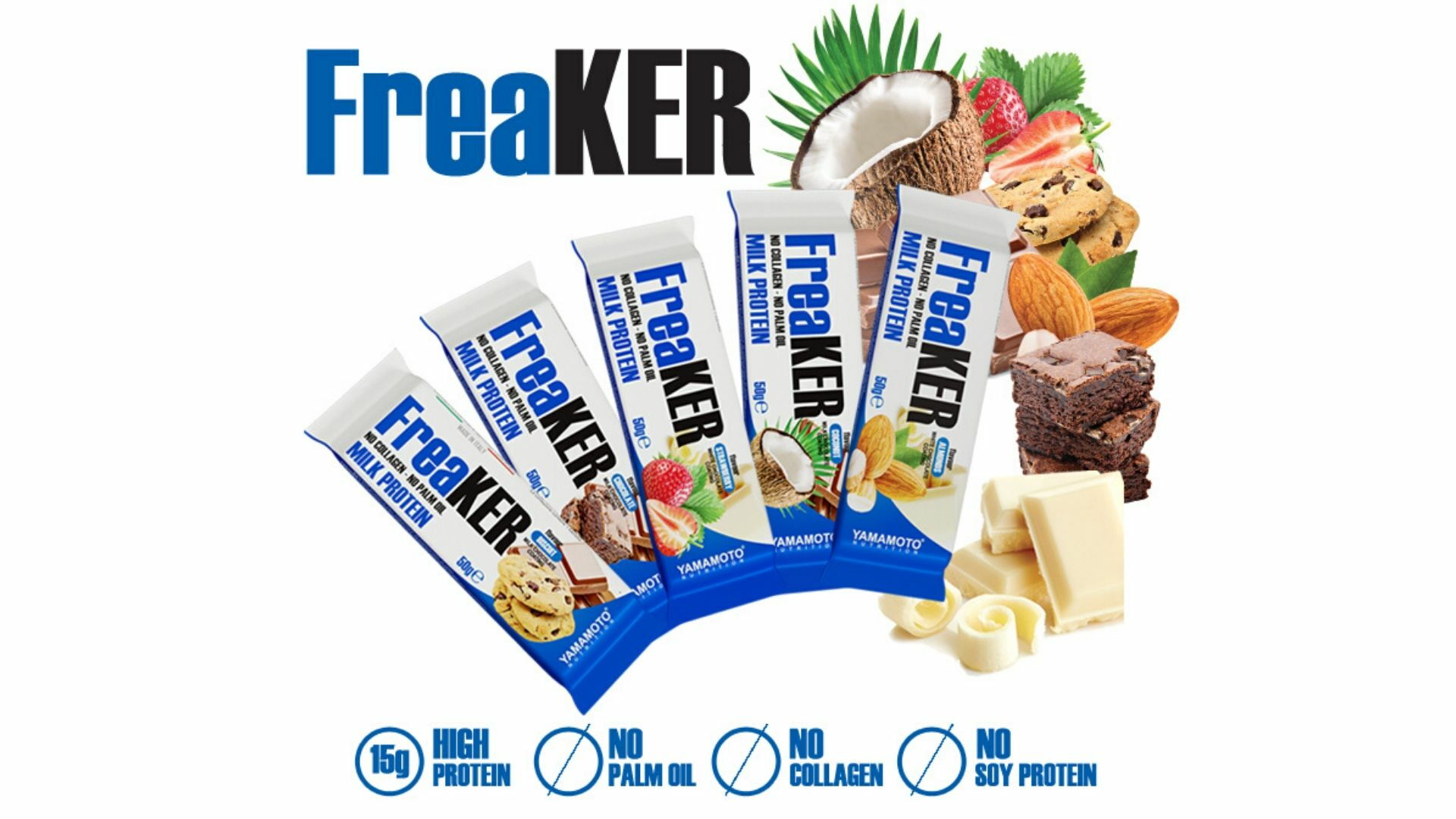Protein bars have become one of the most interesting foods in the fitness and bodybuilding panorama, but not only. These protein-rich snacks are becoming increasingly popular among those who want to start following a diet without giving up the greedy and "chocolatey" snack; thanks to the fact that they combine a tasty flavor with functional qualities.
But all that glitters is not gold! Even if bars with added protein seem an ideal and super healthy solution compared to packaged sweets (in short, the best of both worlds), beneath this image, there is often a very different scenario.
Many protein snacks are produced by looking only at the palatability of the final result, which leads to the inclusion of sugars, hydrogenated fats, dyes, etc. In short, at the end of the games, we find ourselves with a portion of junk food with added proteins. We might as well eat a Snickers with a whey protein shake!
In this article, we will see the three most important principles to follow to choose the best protein bars and what values we have to check on the label to make informed decisions.
1. Analysis of nutritional values
The first thing to analyze is the nutritional values, then the quantities of fats, carbohydrates, and proteins. Let's go step by step:
- Fats: the first value to check. There are some low carbs bars that will have relatively high-fat values ??but, in other cases, be careful not to overdo it. Fats are in fact what makes food palatable (good and delicious). Think of Nutella or any biscuits on the market. They also have a fat percentage higher than 30%! My advice is to always focus on protein bars with a fat content of less than 20 g (again, except for low carbs bars).
- Carbohydrates: the second particularly difficult element is the carbohydrate rate and, in particular, sugars. The sweet taste is an important determinant for purchase. As mentioned above, there are some low carbs bars with a fairly low carbohydrate content. In all other cases, my advice is not to exceed 40 grams of carbs per bar (there are many sweets and snacks that have about 50 grams, so adjust accordingly!).
- Proteins: obviously, in this type of snack the protein content is fundamental. There are several protein percentages that can be found on the market, my advice is to focus on bars with more than 25 grams of protein each.
For the rest, the choice of specific nutritional values ??depends on your needs and your goals. If you follow a ketogenic diet, a high-carb or high-protein nutritional regimen, you will have to base the choice of the bar on what best suits your plan.

Click the image to try the Yamamoto® Nutrition FreaKER!
Protein bars available in many delicious flavors and with a balanced nutritional profile.
2. Composition of macronutrients
Parallel to the discussion on nutritional values ??is the one on the composition of macronutrients. Which saccharides, fatty acids, proteins? In short, what sources were used to produce bars? We are going once again to divide the discussion on the basis of macronutrients:
- Fatty acids: one thing is when fats come from dried fruit or unsaturated fats in general, another thing is a bar full of saturated or potentially harmful fatty acids. So let's check the ingredients and be careful of the presence of saturated fats such as rapeseed, coconut, palm oil, or the generic "vegetable oils".
- Carbohydrates: the main problem here is the presence of sugars. Let's check on the label how many of the carbohydrates contained in a bar are sugars and let's also check that they're not on the top of the ingredient list.
- Protein: let's check the protein source and, consequently, the amino acid spectrum. A more noble source has a more complete amino acid spectrum, therefore rich in essential amino acids close to the ones of human skeletal muscle. An incomplete spectrum is deficient in some essential amino acids and limits protein synthesis. In general, the noblest source that can be found is that of whey protein. Equally good can be considered a bar containing milk proteins, therefore both whey and casein. We distrust exclusively vegetable sources (soybeans or similar legumes) because they have a worse amino acidic profile. Exception made, obviously, for those who follow a vegan diet and can only count on these sources! In this case, there are special vegan protein bars.
3. Presence of other elements
Finally, we check the presence of additives, preservatives, dyes and similar. In general, the shorter the list of ingredients, the better, even if a minimum presence of preservatives is necessary and good for the correct maintenance and conservation of the snack. But let's avoid products with endless ingredient lists full of useless elements aimed only at making the bar more salable. For example, pistachio protein bars of an almost fluorescent color!
Conclusions
The protein bar can be a winning choice but, before buying a random one, let's ask ourselves if it is really healthy. My invitation, for those who are curious and want to take a test, is to compare proteins bars labels and nutritional values ??with those of the most common snacks. Try it and you will be amazed at many similarities! If the bar you would like to buy is similar to a common snack with the addition of protein, then, perhaps, one fruit and a whey shaker could be a better solution.
